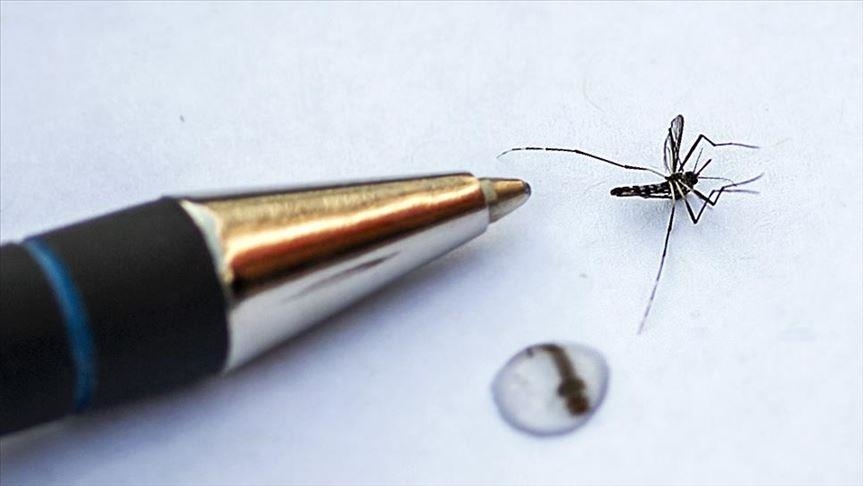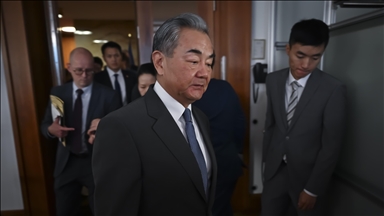FACTBOX – What is viral chikungunya fever and which regions are affected
Chikungunya virus infections near 50,000, mostly in Latin America, including 90 deaths in 16 countries across the world

- Nearly 8,000 cases of viral fevers recorded in southern China, Taiwan, Hong Kong and Singapore
- Mosquitoes spread chikungunya virus, with most symptoms like fever and joint pain
- First identified in 1952 in the eastern African nation of Tanzania, from where it draws its name, outbreaks have been reported in more than 110 countries
- At least 2 approved vaccines are in use but not available widely, while experts advise use of mosquito nets and coils
ISTANBUL
Rising cases of chikungunya fever are reminding people across the globe of COVID-19 days, thus prompting extra health measures.
Mosquitoes spread this viral fever that causes chikungunya in humans, with symptoms like fever and joint pain, which are rarely fatal, but expectant mothers, newborns, the elderly, and people with compromised immune systems face a greater risk.
Besides, nonspecific symptoms such as nausea, vomiting, loss of appetite, headache, and muscle pain may also occur among humans.
This year, the chikungunya cases have soared to nearly 250,000, including 90 deaths, recorded in 16 countries.
The bulk of cases have been reported in Latin America, with Brazil at the top, recording 185,553 cases, totaling over 240,000 until July, according to data from the European Centre for Disease Prevention and Control.
Nearly 8,000 cases have been recorded in Guangdong province in southern China, Hong Kong, Taiwan, and Singapore.
Why ‘chikungunya’?
First identified in 1952 in the eastern African nation of Tanzania, past chikungunya cases and outbreaks have been reported in more than 110 countries, according to the World Health Organization (WHO).
“The name ‘chikungunya’ derives from a word in the Kimakonde language of southern Tanzania, meaning ‘that which bends up,” according to the WHO.
It is caused by a ribonucleic acid (RNA) virus, according to the WHO, which identifies the virus as CHIKV.
According to the WHO, the virus is transmitted to humans by the bites of infected female mosquitoes, most commonly Aedes aegypti and Aedes albopictus mosquitoes.
Aedes mosquitoes are “widely” found in China, according to the country’s National Health Commission (NHC).
To defeat the spread of the virus, health experts urge people to “practice enhanced precautions,” according to the US Centers for Disease Control and Prevention (CDC).
However, the symptoms of chikungunya resemble those of dengue and Zika viruses; thus, it sometimes becomes hard to determine the extent of the chikungunya outbreak.
Rising cases prompt extra measures, including travel advisory
Latin America has reported most of the cases this year. Until last month, the highest number of cases were reported in Brazil, with 185,553 cases; Bolivia, 4,721; Argentina, 2,836; and Peru, 55.
However, in recent weeks, southern China has seen cases jump, while travelers in Singapore and Taiwan have been found infected by the virus.
The industrial city of Foshan in Guangdong province has recorded most of the cases this year, where over 2,700 people fell ill within a week until early August.
Early in July, local health authorities reported the first case as an imported case in a traveler.
Neighboring Guangzhou has also reported cases, while semiautonomous Hong Kong as well as Taiwan have also logged cases.
Singapore saw its numbers double this year to 17, most of whom have travel history.
While Chinese authorities are yet to explain the latest outbreak of chikungunya, local authorities in Guangdong have launched stricter anti-mosquito measures.
Residents have been told to clear stagnant water while drainage channels are being cleared of any blockage to avoid breeding places for mosquitoes.
People buying medicine for symptoms of chikungunya are required to register themselves.
The rising cases of chikungunya have raised alarm in Guangdong province, as local authorities in eastern Fujian province have issued health alerts for travelers returning from affected areas.
Those showing any symptoms have been asked to undergo 14-day self-monitoring as well as seek medical attention and self-isolate to prevent further spread.
Authorities in Jiangsu and Sichuan provinces have also taken health measures in the wake of rising chikungunya cases in Guangdong province.
Officials have stressed community cleanup operations and household inspections, with a focus on courtyards, balconies, and drainage systems; removing waste; and sealing construction sites as well as maintaining water infrastructure.
Amid rising cases in southern China, the US issued a travel advisory urging increased caution when going to affected areas in China.
Vaccines and medication
There are two vaccines approved for use against chikungunya fever.
According to the CDC, the US licensed two vaccines, including a live-attenuated vaccine (IXCHIQ), in November 2023 for adults aged 18 and above.
The second one, a virus-like particle vaccine (VIMKUNYA), was licensed in February this year for use in adolescents and adults aged 12 and above.
But they are not widely available.
As the cases began to rise, China’s National Health Commission released an “emergency medical letter” at the end of July.
It described the chikungunya fever as “an acute infectious disease,” adding that this fever is widespread in tropical and subtropical regions worldwide.
There is “currently no chikungunya virus vaccine available in China,” the NHC said.
It advised people to promptly clear mosquito breeding grounds and reduce the density of mosquito vectors, besides advising the use of mosquito coils and nets.
An advisory by the WHO urges people at high risk to wear clothing that minimizes skin exposure to day-biting mosquitoes.
Window and door screens should be used to prevent mosquitoes from entering homes, it added.
Asia first reported urban outbreaks of chikungunya in the 1970s, but since 2004, such outbreaks have become more frequent and widespread, according to the WHO.
The Americas reported their first local, mosquito-transmitted chikungunya cases in late 2013, after which large outbreaks occurred, affecting most of the countries in the region.
Anadolu Agency website contains only a portion of the news stories offered to subscribers in the AA News Broadcasting System (HAS), and in summarized form. Please contact us for subscription options.







